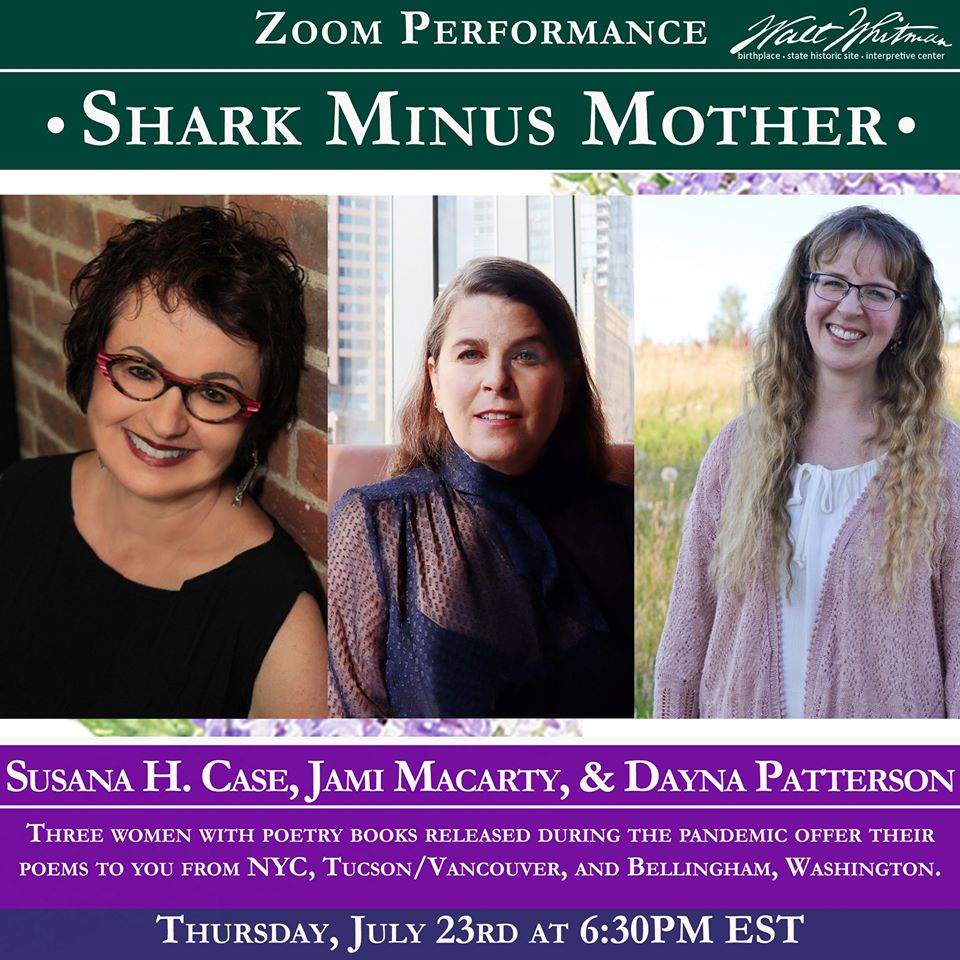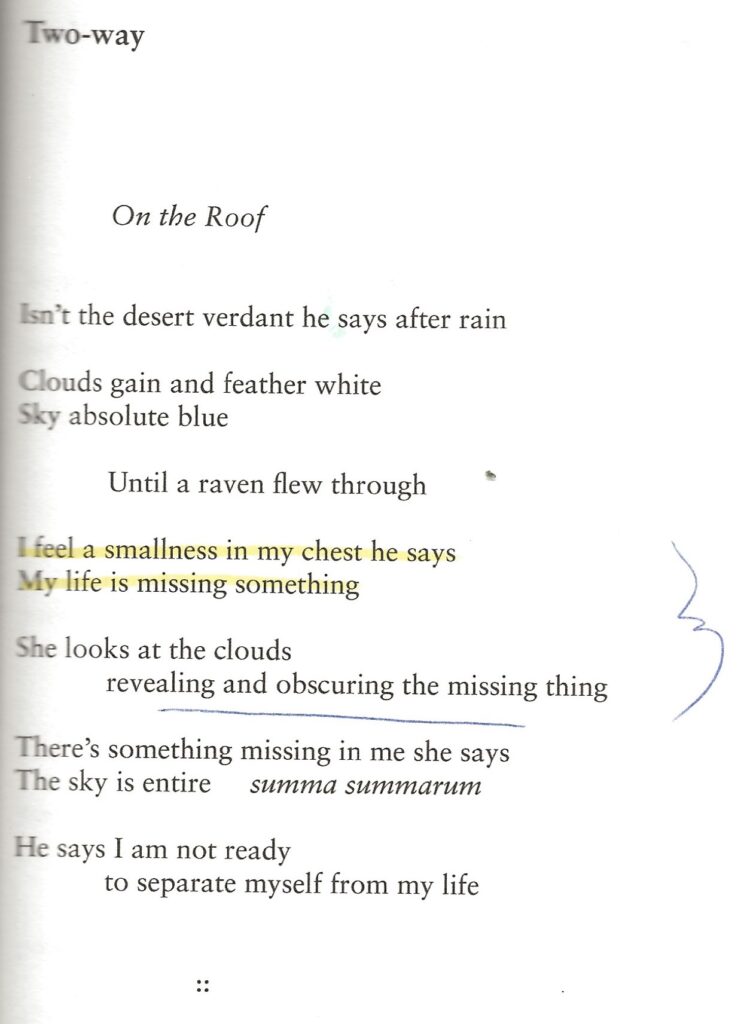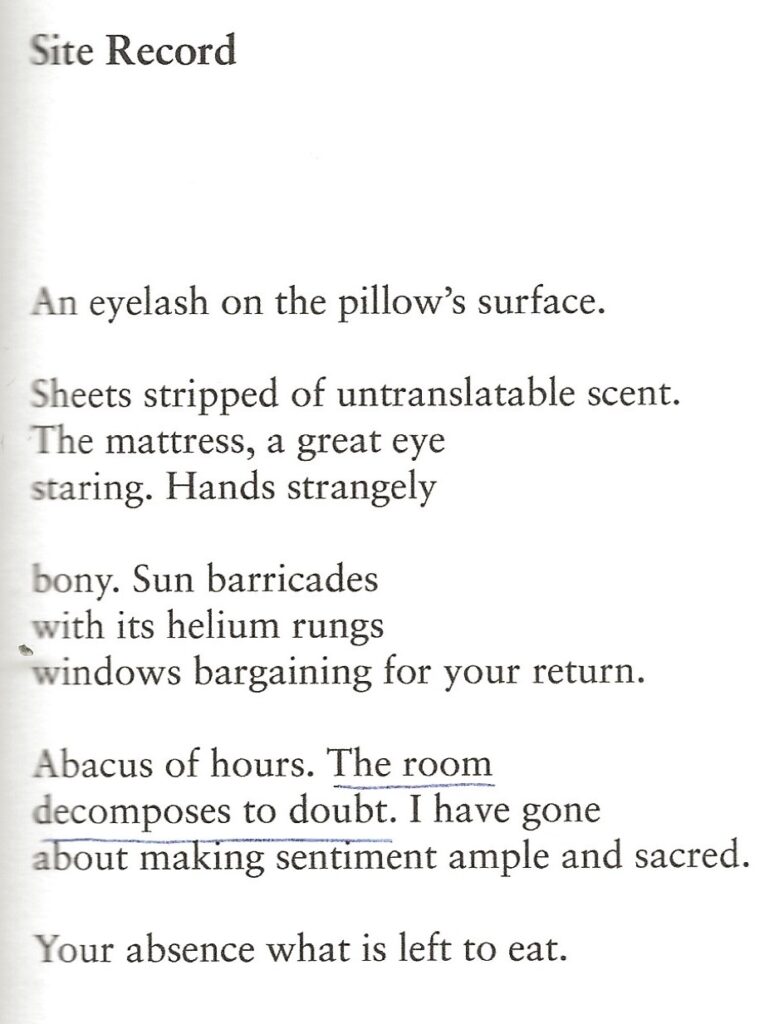Dear Readers, Dear Readers,
Here I am at May’s end to share with you two poems from my second collection, The Long Now Conditions Permit (awaiting a beloved publisher), that have been recently published, and to talk a bit about my practice of sending my writing out for consideration.

Jet Fuel Review first came to my attention within a community of women/women-identified writers who share their publishing yeses and nos. Yes, also the nos. Because receiving a no is an indication of taking the time and making the effort to research magazines, prepare a batch of writing, and send it off for consideration. That is, a no is not feedback on its own, but it is a sign that the writer is committed enough to her writing to share it with editors, publishers, and readers. So, our community celebrates the nos. In fact, we challenge each other to send our writing out into the world enough in order to reach the yearly goal of receiving one hundred nos. This is a intersectional feminist literary action meant to confront especially the gender imbalances in the literary landscape.
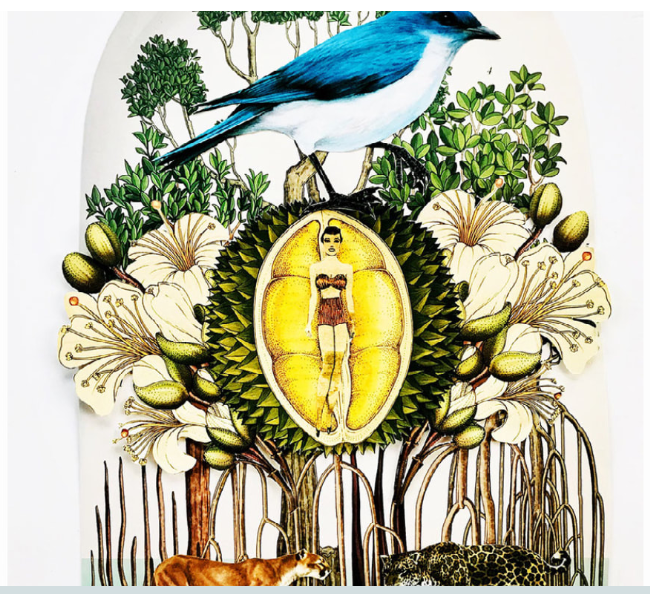
A few of the women writers in this community shared that they had received a yes or a no from Jet Fuel Review. After the name of the magazine appeared in the field of my attention a few times, I felt called to take a closer look. What first captured my attention when I visited the Jet Fuel Review website: the artwork! I found it to be a beautiful blend of the provocative and evocative, speaking a visual language resonant with my imagination and writing. Then, upon reading the writing, I found much to react for and against—both ranges of responsiveness are important to me as a reader. Respecting what I saw and read, I sent the editors a batch of my poems.
They said yes to “Splitting Lesson,” a poem from The Long Now Conditions Permit. Whoo hoo!
l am grateful to everyone who makes Jet Fuel Review (JTR) a vibrancy; I appreciate being included in the JTR community. How dear and special to be in conversation with careful and thoughtful editors.
Sweetening the pot of this yes: That sister writers from my community brought Jet Fuel Review to my attention; That my poem shares space in the magazine with writing by some of those sister writers; That my poem rubs shoulders with poems by poets new to me, including poet and artist Karyna McGlynn whose art is featured in the issue. I dig her marvelous collages!

In our writing community, we not only share yeses/nos, we share our experiences with magazines, bringing to the fore: Those new or lesser known; Those receptive to particular styles of writing; Those with/out artist-friendly editorial practices; Those magazines to approach with trust or caution; Those to avoid. This sharing—rather than coveting—of experience, knowledge, information, and resources is the precious stuff of a supportive community that expresses not scarcity, but abundance. This ethos strengthens our community and broadens it, bringing more writers together with writers and readers. Simply grand!
Of course, the practice of sending writing out for consideration is also, in part, a numbers game. One cannot win unless one plays. As the wisdom goes. And, the way laws of averages work, the more writing a writer sends out for consideration, the more chances there are for it to receive a yes. I am engaged in this practice of sending my writing out for consideration, because I want to learn what there is to learn from the process. But I know this is not a practice for every writer. For me, it is a question of do I want to keep my writing to myself or share it? I want to share it! And, in the process, I am building my tolerance for no. I have come to understand that much about being a writer is about building tolerances for various aspects of the writing practice that are beyond my control. And, I imagine eventually being unshaken by nos…
And, in the same way, being unshaken by yeses, though shaking with despair at the nos and delight at the yeses may not be helped.
One flavor of yes that emerges from the practice of sending writing out for consideration is the opportunity to build a positive relationship of mutual respect, trust, and meaning with the editorial team of a literary magazine in which my writing appears. Those qualities are surely, brilliantly alive in my relationship with the editorial team at Vallum: Contemporary Poetry.

The lovely, good people at Vallum have been enormously supportive to me and my poems. “Helicopter” and “Nor’easter,” two poems from The Minuses (Center for Literary Publishing, 2020), appeared in issue 13:1 “Open Theme.”
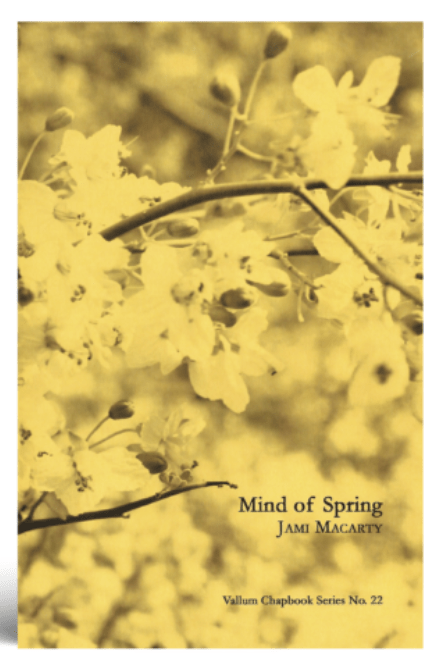
“Mind of Spring,” my long, three-part poem won the 2017 Vallum Chapbook Award and was subsequently published with a cheery yellow (the color of palo verde blossoms) cover, in a limited edition chapbook (sold out in print, but available digitally).

Also, my Vallum darlings have published two poems from The Long Now Conditions Permit. “Lustrous Fugitive” appears in issue 18:1 “Invisibility.”

I like and admire and respect the editors at Vallum very much, and I like the art and writing that the magazine publishes. Not all of it of course, but most of it and that’s something, because I can be a picky and picayune reader. We each have our preferred chords and flavors and such. “Is Occurring,” another poem from The Long Now Conditions Permit, seems to have struck a chord with the editors of Vallum 19:1 “Bridges,” where it appears. Whoo hoo!
Hurrah bridges!
Poetry Bridges!
Community bridges!
: :
The Pluses!
+ Thank you bows (continuous!) to you, dear reader, for the gift of your attention!
+ Thank you bows to my community of women/women-identified writers for their beautiful, generous, loving support, inspiration, and encouragement.
+ Thank you bows to Simone Muench, Faculty Advisor, Cassidy Fontaine-Warunek, Managing Editor et al who make Jet Fuel Review a vibrancy; I appreciate their professional and stream-lined editorial production methods, and now that I am taking in issue #23, I am appreciative of their collective, inclusive, expansive editorial vision and artistic direction.
+ Thank you bows to Eleni Zisimatos, Co-Editor-in-Chief & Poetry Editor, Jay Ritchie, Managing Editor et al at Vallum: Contemporary Poetry for including me and my poems in your sustaining, important, and beautiful presence of and for poetry and art in Montreal, Canada, and internationally.
+ Thank you bows (continuous!) to my publisher Stephanie G’Schwind, and Mountain West Poetry Series editors Donald Revell and Kazim Ali, et al interns at the Center for Literary Publishing (CLP) for making The Minuses (2020) with me.
+ Thank you bows (continuous!) to Beth Svinarich et al at University Press of Colorado for their beautiful support to me and The Minuses.
+ Thank you bows (continuous!) to monsoon storm chaser and marvelous professional photographer, Liz Kemp whose monsoon photograph storms the cover of The Minuses.
+ Thank you bows to Nomados Literary Publishers, Meredith and Peter Quartermain for making my chapbook Instinctive Acts with me.
+ Thank you bows to Vallum Chapbook Series and editors Leigh Kotsilidis and Eleni Zisimatos for making my chapbook Mind of Spring with me.
+ Thank you bows to Finishing Line Press and editors Leah Maines and Christen Kinkaid for making my chapbook Landscape of The Wait with me.
+ Thank you bows (continuous!) to Vincent K. Wong for his friendship, creative collaboration, and for taking my author photos.
+ This bears repeating: Thank you bows (continuous!) to you, dear reader, for the gift of your attention! If you have any questions or comments, write me! I would love to hear from you!



